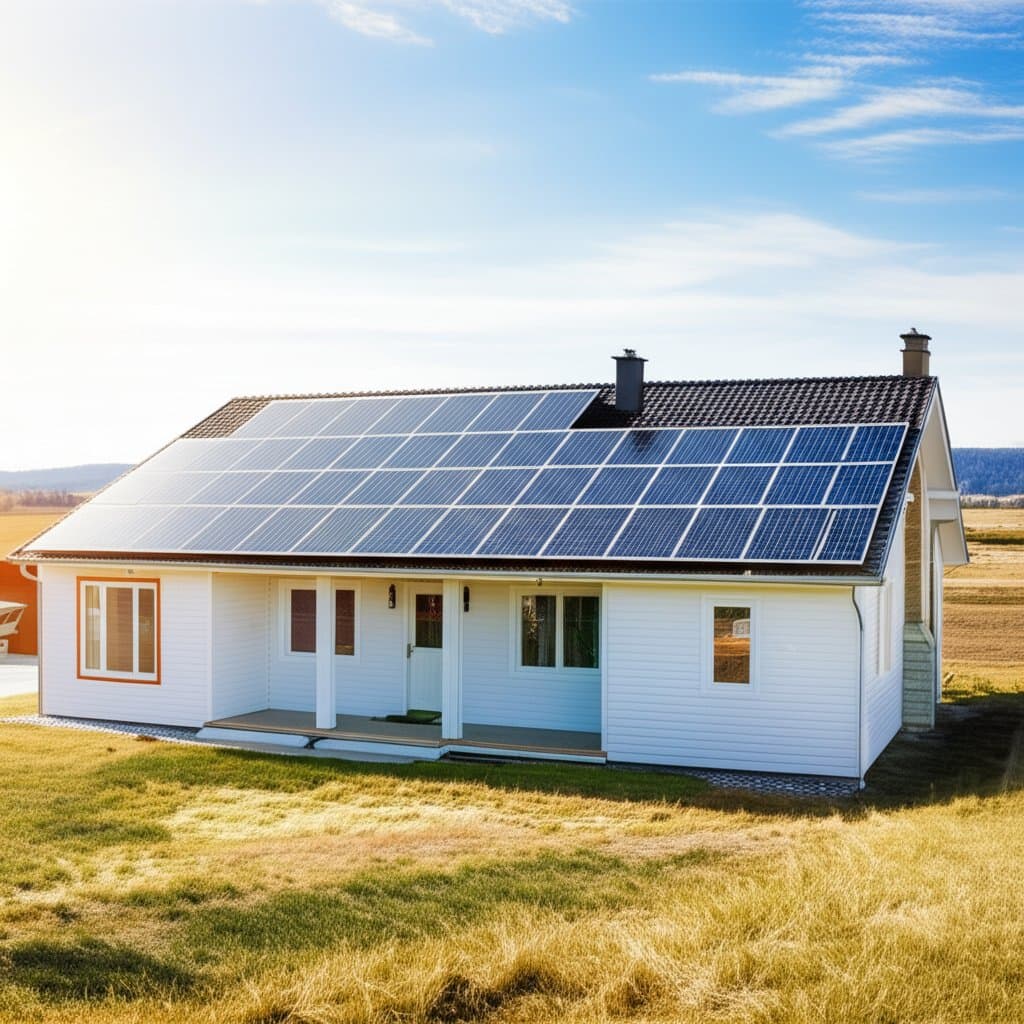2025 USDA Loans Fund Solar Installations for Rural Construction
The United States Department of Agriculture has updated its loan programs for 2025, enabling rural homeowners to incorporate solar energy systems into new construction financing. This expansion streamlines the process for building sustainable homes in eligible areas. Homeowners benefit from integrated funding that reduces complexity and promotes long-term energy savings.
Key Updates to USDA Loan Coverage
USDA loans remain a cornerstone for rural development, offering low interest rates, no down payment requirements, and extended repayment terms. The 2025 revisions extend eligibility to include solar photovoltaic systems as part of single-family housing construction loans under Section 502. Eligible borrowers can now finance solar installations alongside the home build, provided the property is located in a designated rural area as defined by USDA maps.
This integration eliminates the need for separate loans or post-construction modifications. Lenders evaluate the combined project costs during the initial application, ensuring comprehensive coverage from the outset. The policy aligns with broader federal initiatives to advance renewable energy adoption in underserved regions.
Benefits of Solar Integration in Rural Homes
Rural properties often face elevated energy demands due to expansive layouts and distance from utility grids. Solar systems address these challenges by producing on-site electricity, which lowers monthly utility expenses and enhances energy reliability. In sunny rural locales, panels can generate sufficient power to offset a significant portion of household needs, sometimes achieving near-net-zero energy consumption.
Beyond cost savings, solar installations contribute to environmental sustainability by reducing reliance on fossil fuels. They also bolster property resilience against power outages, a common issue in remote areas. For homesteads or farmsteads, solar power supports ancillary uses such as powering outbuildings or irrigation equipment.
Mechanics of USDA Solar Financing
The updated program allows borrowers to include solar system costs in the overall construction budget for USDA-guaranteed loans. Approved systems must adhere to standards set by the USDA and the Interstate Renewable Energy Council, ensuring durability and efficiency ratings of at least 15 percent.
Key features include:
- Unified Loan Structure: Combine home construction and solar expenses into a single mortgage, with funds disbursed progressively as milestones are met.
- Streamlined Approvals: Utilize one appraisal that accounts for both the structure and renewable components, plus shared inspections by certified professionals.
- Rate Protection: Secure a fixed interest rate for the entire financed amount, typically ranging from 3 to 5 percent based on credit and market conditions.
Installation requires licensed contractors familiar with USDA requirements. Post-installation, systems qualify for federal tax credits, such as the 30 percent Investment Tax Credit, which can further reduce effective costs.
Evaluating Costs and Long-Term Returns
Initial solar investments range from $10,000 to $25,000 for a typical rural home, depending on system size and local incentives. When financed through a USDA loan at $200,000 total project cost, the addition increases monthly payments by approximately $50 to $100. However, energy bill reductions of $75 to $150 per month often exceed this increment, yielding positive cash flow within the first year.
Property appraisals reflect solar enhancements, potentially adding 3 to 4 percent to home value. This uplift provides equity for future refinancing or sale. Over a 30-year loan term, cumulative savings on energy and maintenance can surpass $100,000, factoring in panel lifespans of 25 years or more.
Steps for Rural Homeowners to Proceed
Verify site eligibility using the USDA's online eligibility tool, which covers areas with populations under 35,000 and low-density zoning. Consult a USDA-approved lender early to discuss project feasibility and pre-qualify for financing.
Collaborate with architects and builders experienced in solar-ready designs. Optimal setups involve south-facing roofs with minimal shading, electrical conduits pre-wired for inverters, and battery storage options for off-grid capability. In regions with variable weather, select panels with anti-soiling coatings to maintain output.
Budget for permitting and interconnection agreements with local utilities, which the USDA loan can cover. Professional energy audits during planning help customize system capacity to match anticipated usage, such as 10 to 15 kilowatts for a family of four.
Broader Context and Rural Adoption Trends
This policy responds to increasing demand for renewables in rural America, where solar deployment has grown 20 percent annually. Farms integrate panels for livestock watering systems, while communities develop microgrids for collective energy sharing. The USDA's move supports national goals for carbon reduction and energy security.
State-level rebates, such as those in California or Texas, can complement federal financing, amplifying affordability. Rural electric cooperatives often provide net metering, crediting excess production back to the grid.
Realizing Sustainable Rural Living
A solar-equipped rural home fosters independence and efficiency. Daily operations benefit from stable power, reduced environmental impact, and simplified budgeting. Regular upkeep involves annual cleanings and performance checks, with warranties covering 80 percent output for decades.
Homeowners gain tools like solar monitoring software to optimize usage, tracking generation against consumption in real time. This integration enhances the appeal of rural lifestyles, blending tradition with modern innovation for enduring value.
